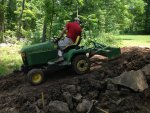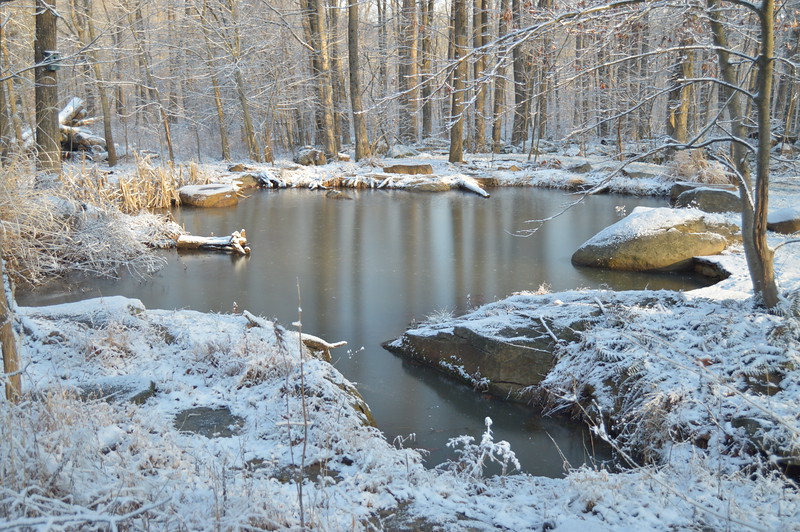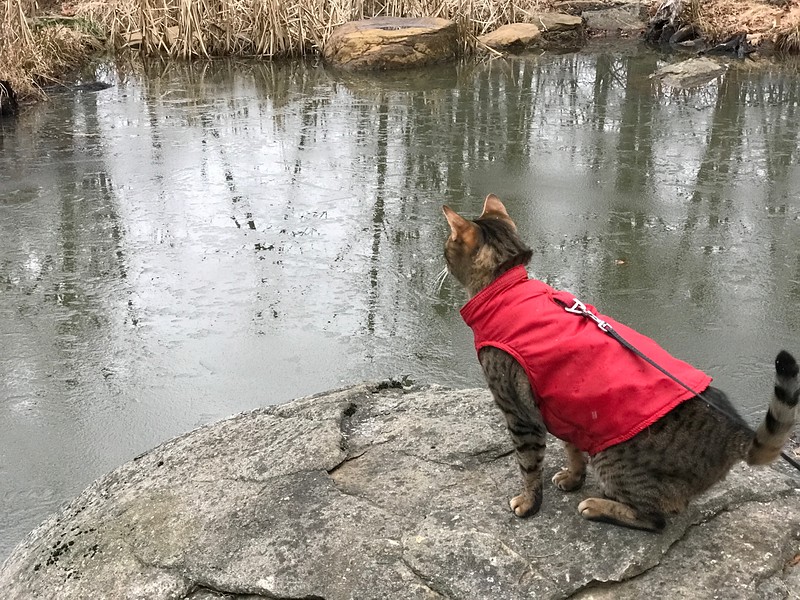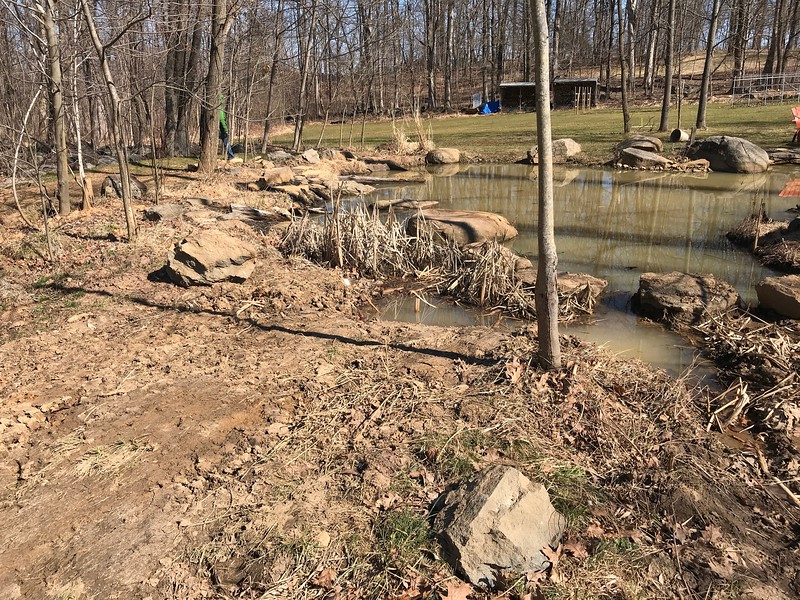- Joined
- Jul 22, 2019
- Messages
- 14
- Reaction score
- 64
- Location
- Eastern Pennsylvania
- Hardiness Zone
- 6
- Country

Here is how our pond came to be.....
We bought our property about 9 years ago. Much of it was overgrown with sticker bushes, poison ivy and brush. The land is divided in half by a wooded area featuring a strip of glacial till (boulders/rocks left behind as a glacier retreated.)
The house needed a LOT of work, but we were a bit cash shy having just bought the property... so we set to work clearing/cleaning the land. There was a wide path that led through the woods that went to the other side of our property. Most of the large rocks had been removed, but it was overgrown with brush/stickers and it was always wet and muddy. We cleared the area and set some boards down so we could at least drive our mower over to the other side. When hurricane Sandy came through in 2012, the massive amounts of rain washed all the soil out of the cleared area, leaving a large, 3-4 foot deep muddy pond.... and we had no way to get a mower out to our field. All that brush had been holding the soil in place.

We were planning on a pond... but it was going to be right off patio behind the house. But...... we could see how pretty this site might be with its border of large boulders and irregular shape. So we cleaned it up a bit and built up a raised pathway to our field.
While I shaped and graded

My wife set about searching the woods for plants she liked and moving them to new homes around the pond..

We made one area especially for a low table and some chairs

In a few weeks time, we had a cute little pond

The pond matured and stabilized in a few months. We have spent many evenings sitting by it and chatting

Makena, our Bengal loves to sit with us by the pond

Makena also likes to poke around by the water. He is trained not to harm frogs, but he still often waves a paw at them to make them jump

Winter...


Lots of wildlife moved in
Especially frogs. They get so loud some nights its hard to carry on a conversation.... and this is where the name Hopenkroak Pond came from...

We had a little snapping turtle move in...

But Painted turtles would not stay, they would show up for a few days, then leave. We figured the pond was likely too small for them.

We were starting to wish for a larger pond when two things happened...
We bought our property about 9 years ago. Much of it was overgrown with sticker bushes, poison ivy and brush. The land is divided in half by a wooded area featuring a strip of glacial till (boulders/rocks left behind as a glacier retreated.)
The house needed a LOT of work, but we were a bit cash shy having just bought the property... so we set to work clearing/cleaning the land. There was a wide path that led through the woods that went to the other side of our property. Most of the large rocks had been removed, but it was overgrown with brush/stickers and it was always wet and muddy. We cleared the area and set some boards down so we could at least drive our mower over to the other side. When hurricane Sandy came through in 2012, the massive amounts of rain washed all the soil out of the cleared area, leaving a large, 3-4 foot deep muddy pond.... and we had no way to get a mower out to our field. All that brush had been holding the soil in place.
We were planning on a pond... but it was going to be right off patio behind the house. But...... we could see how pretty this site might be with its border of large boulders and irregular shape. So we cleaned it up a bit and built up a raised pathway to our field.
While I shaped and graded
My wife set about searching the woods for plants she liked and moving them to new homes around the pond..
We made one area especially for a low table and some chairs
In a few weeks time, we had a cute little pond
The pond matured and stabilized in a few months. We have spent many evenings sitting by it and chatting
Makena, our Bengal loves to sit with us by the pond
Makena also likes to poke around by the water. He is trained not to harm frogs, but he still often waves a paw at them to make them jump
Winter...
Lots of wildlife moved in
Especially frogs. They get so loud some nights its hard to carry on a conversation.... and this is where the name Hopenkroak Pond came from...
We had a little snapping turtle move in...
But Painted turtles would not stay, they would show up for a few days, then leave. We figured the pond was likely too small for them.
We were starting to wish for a larger pond when two things happened...




